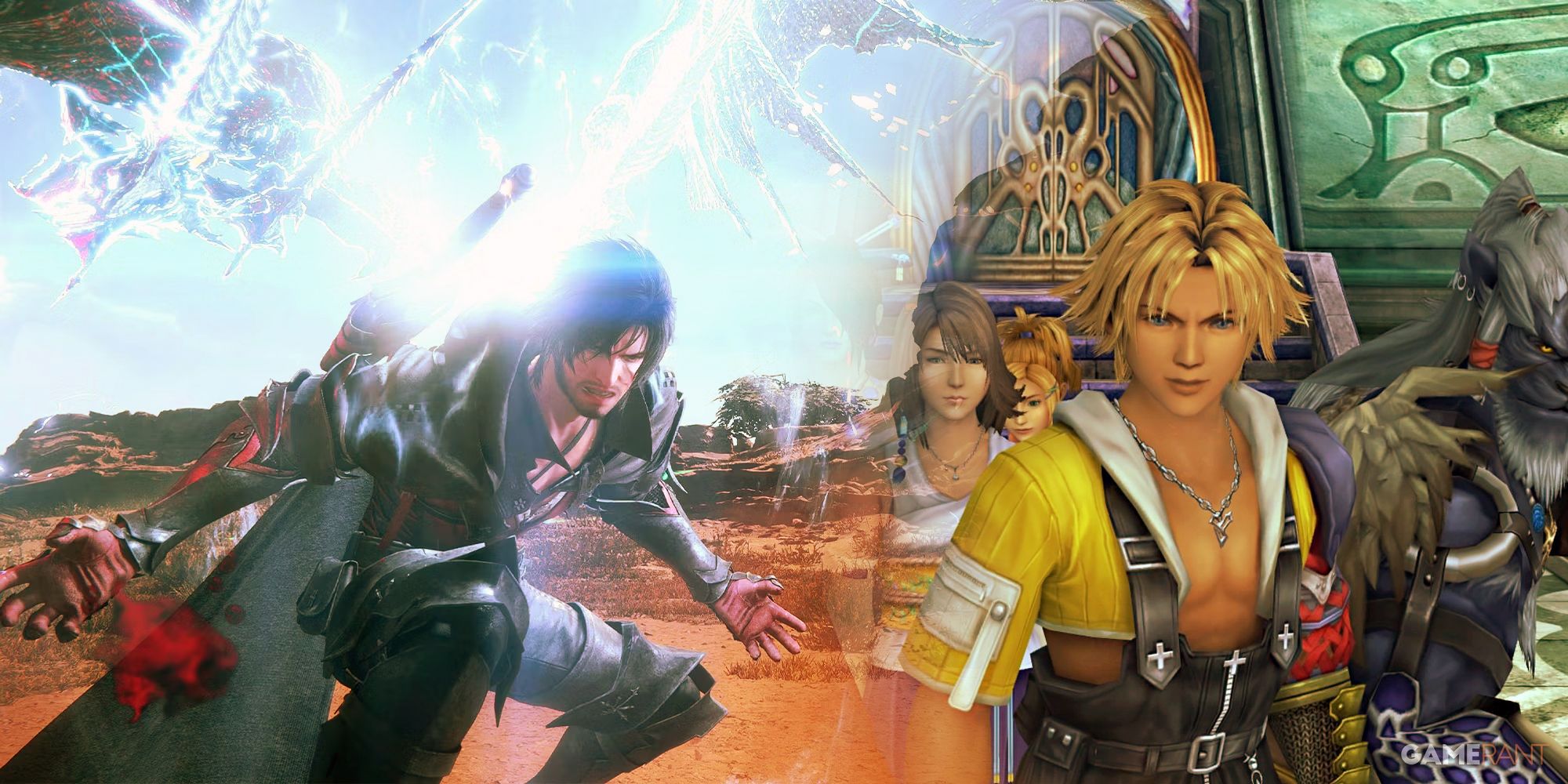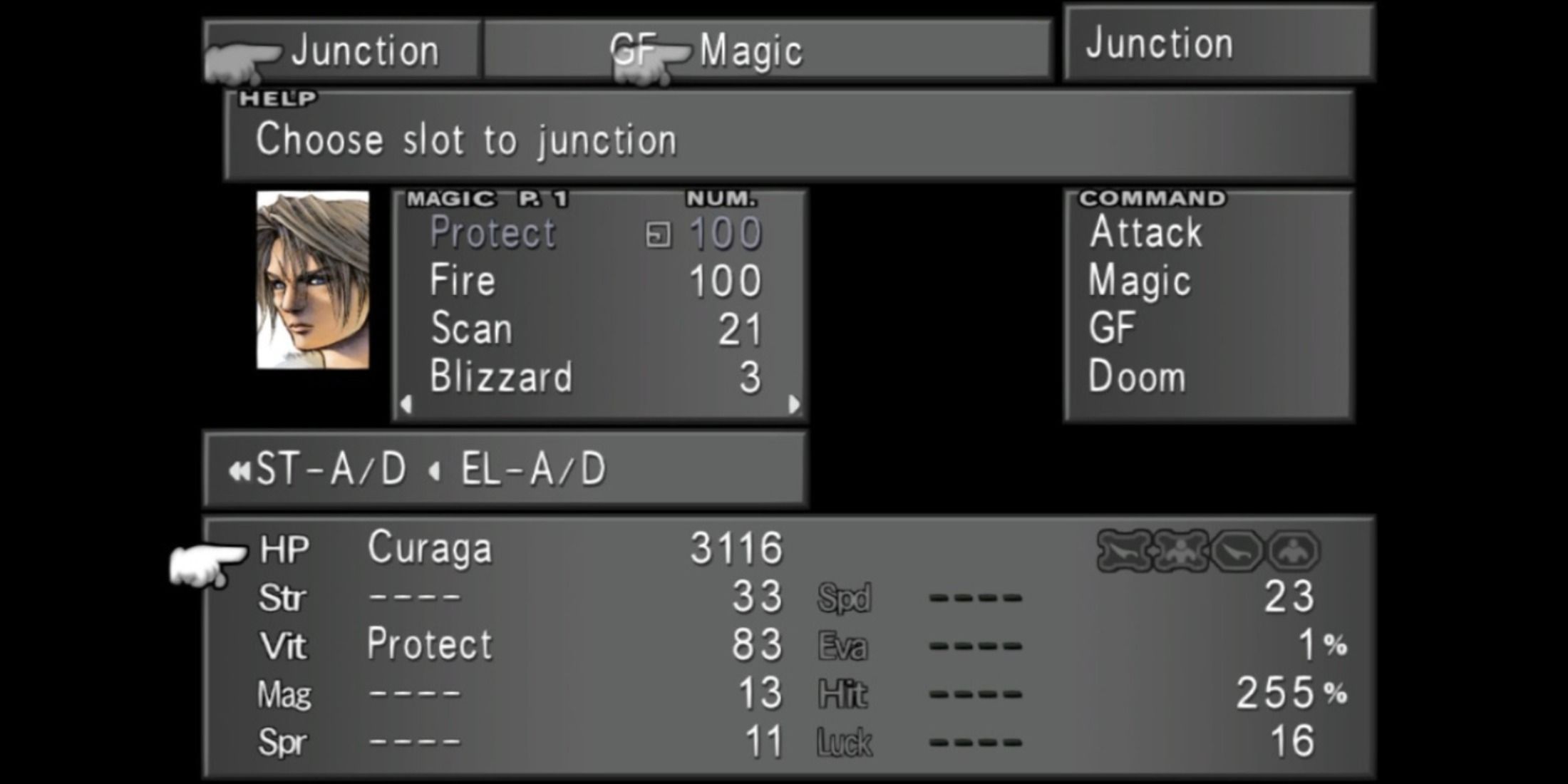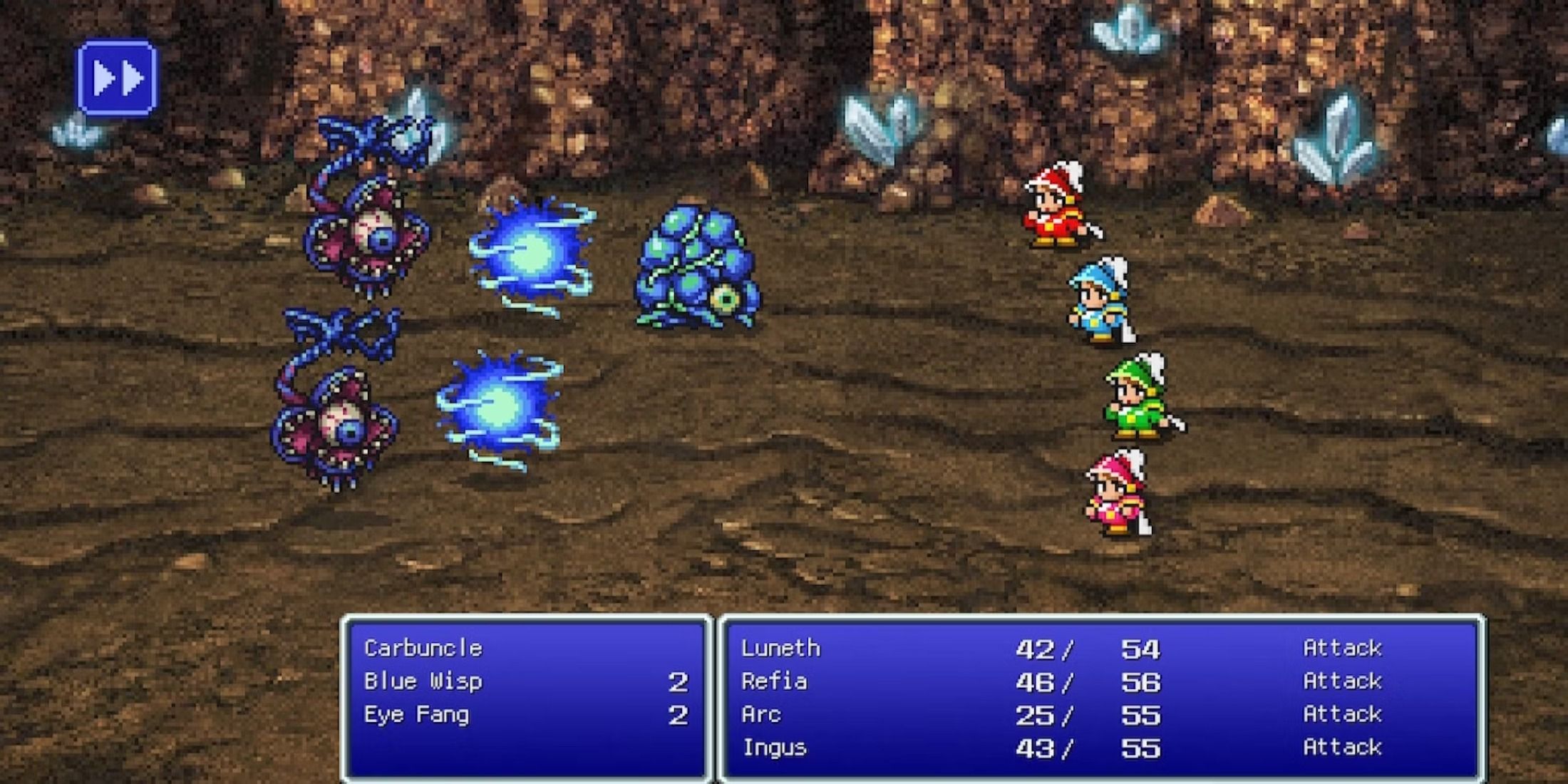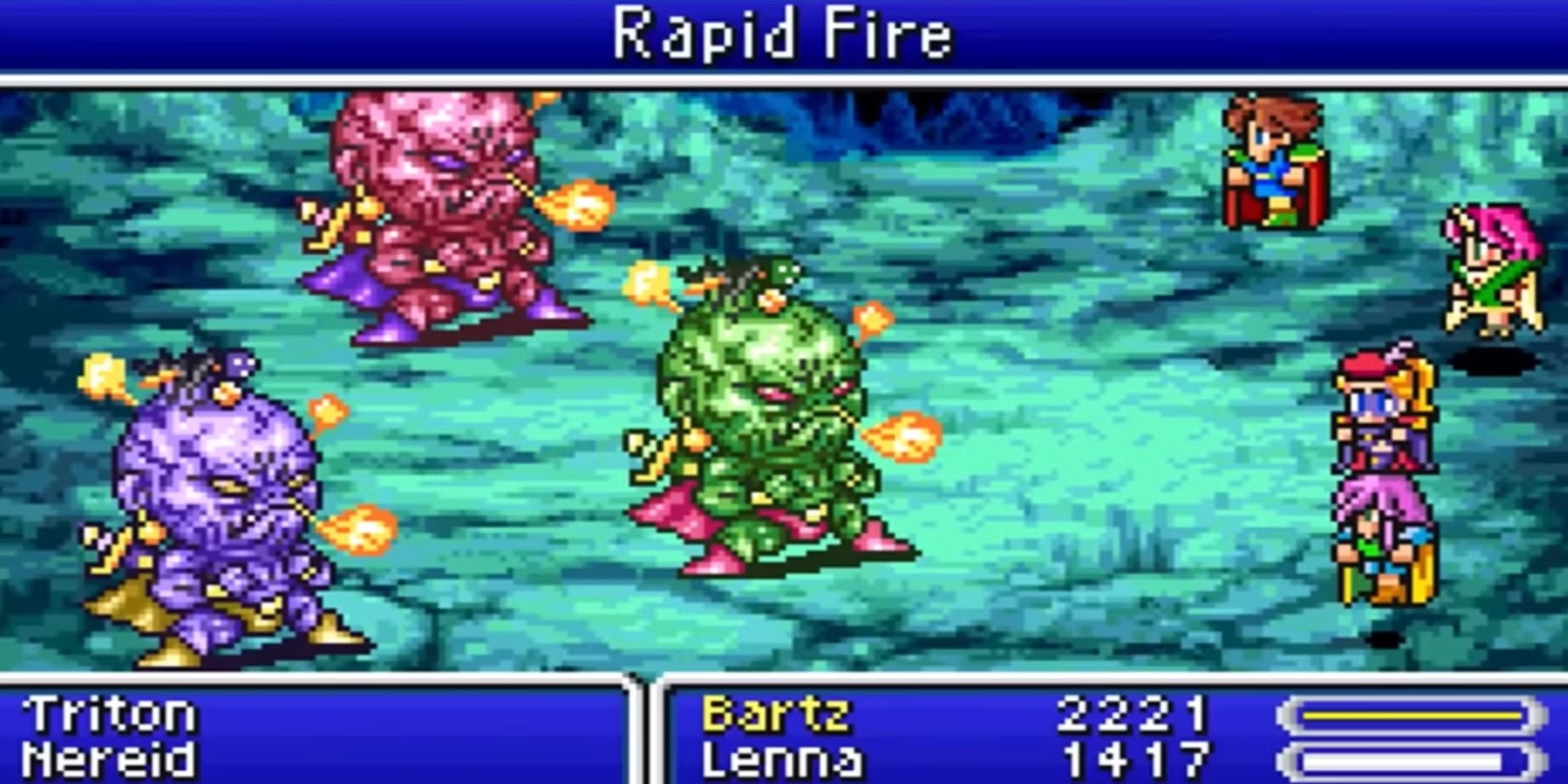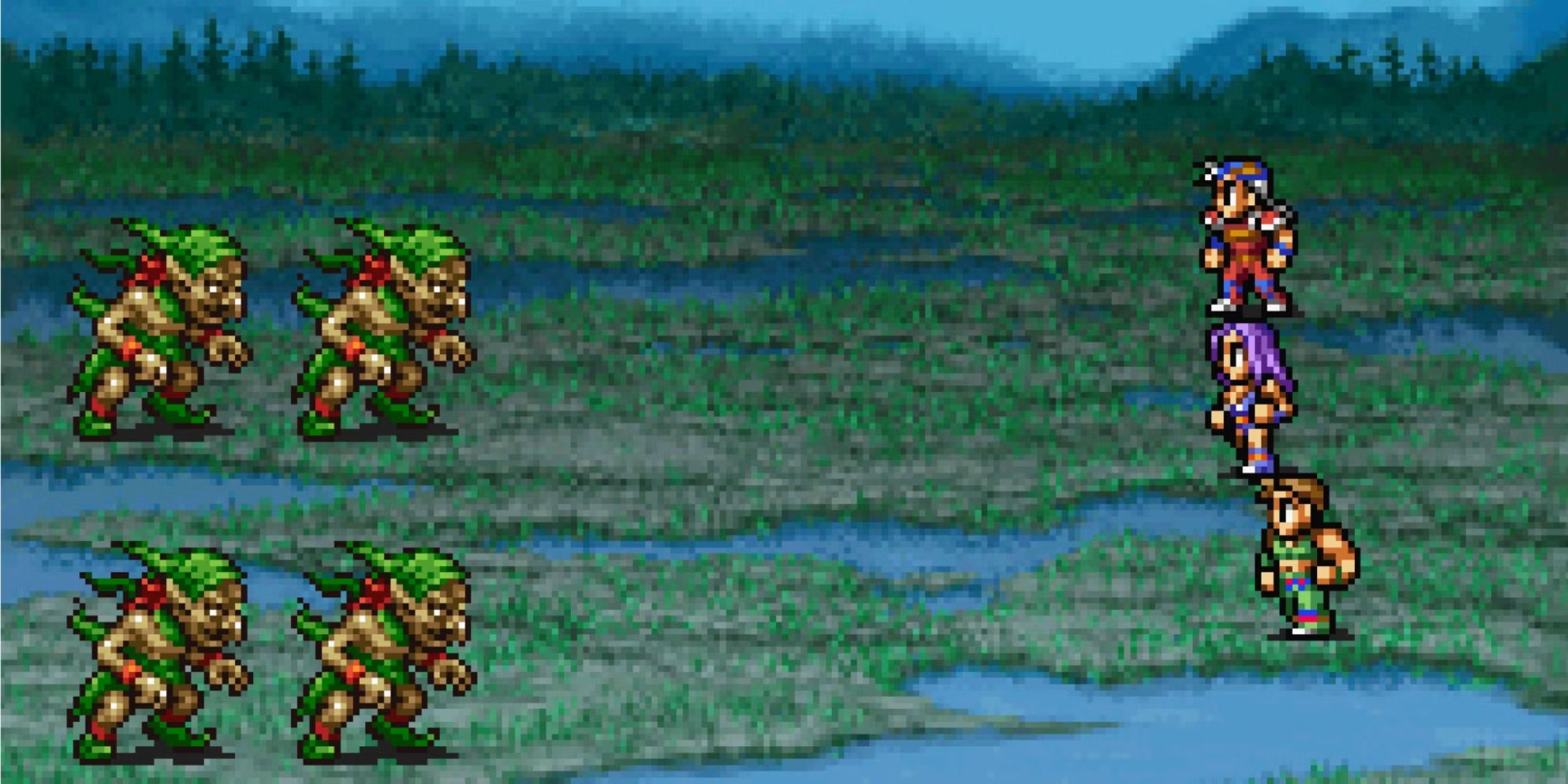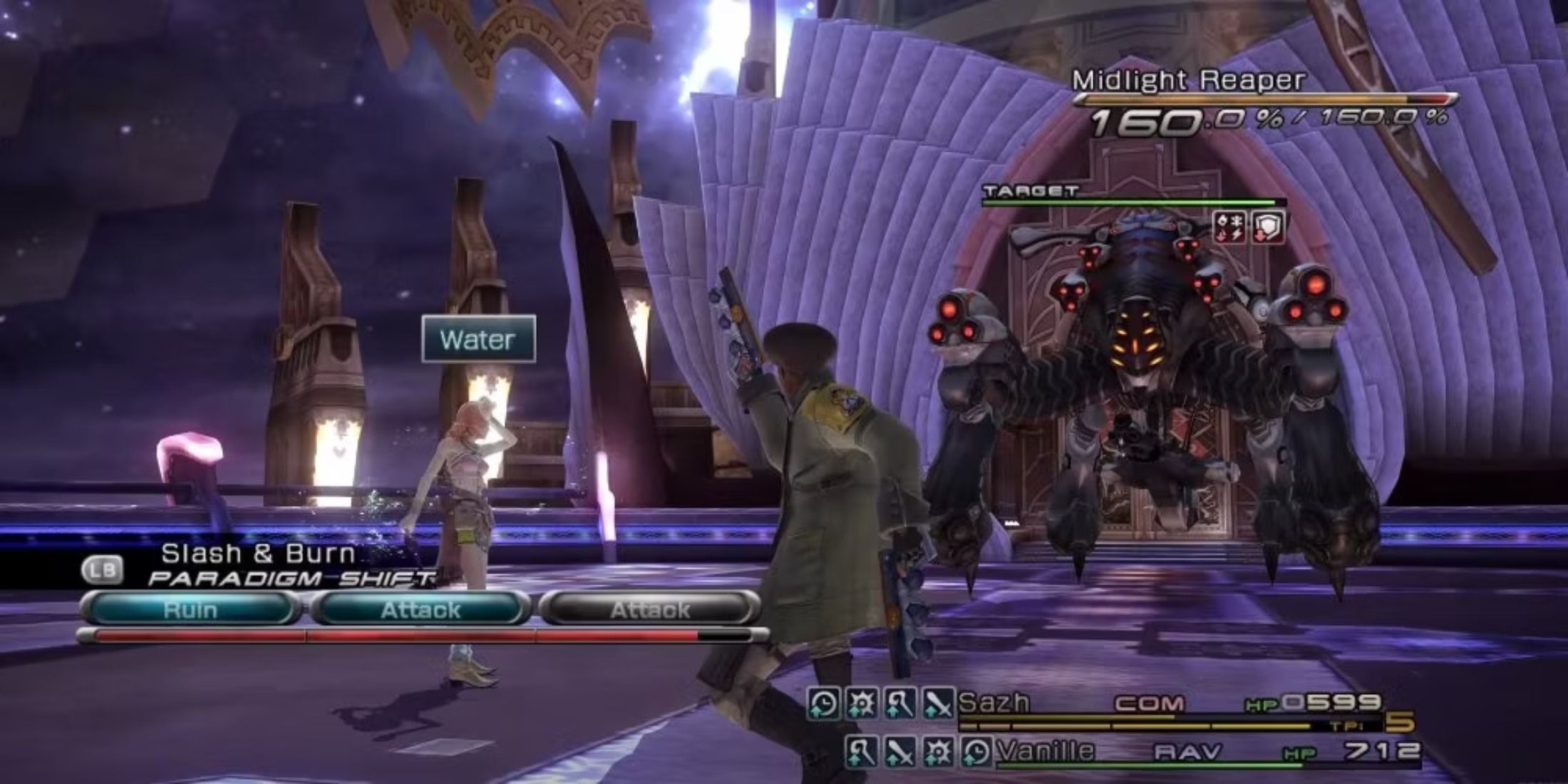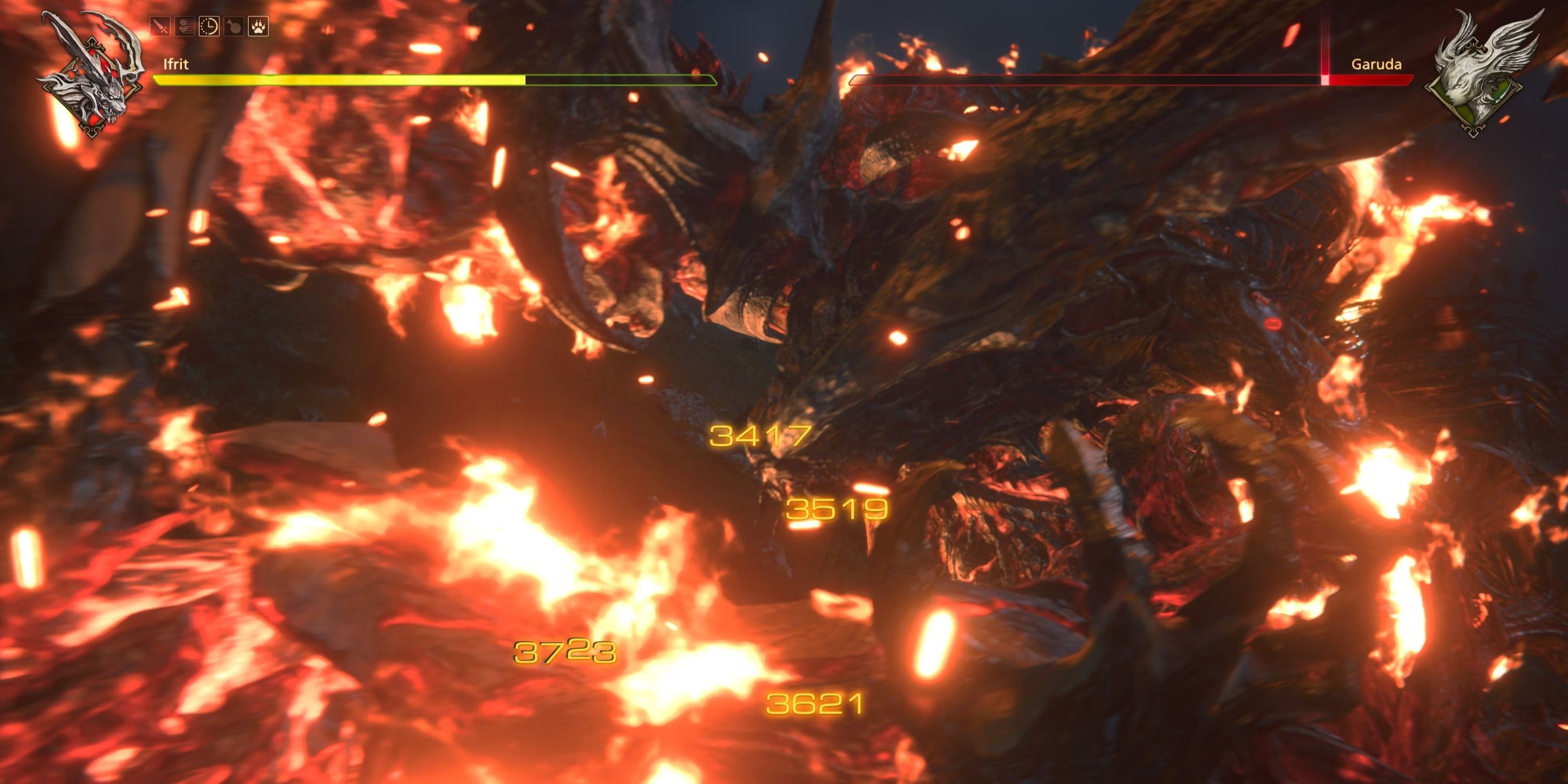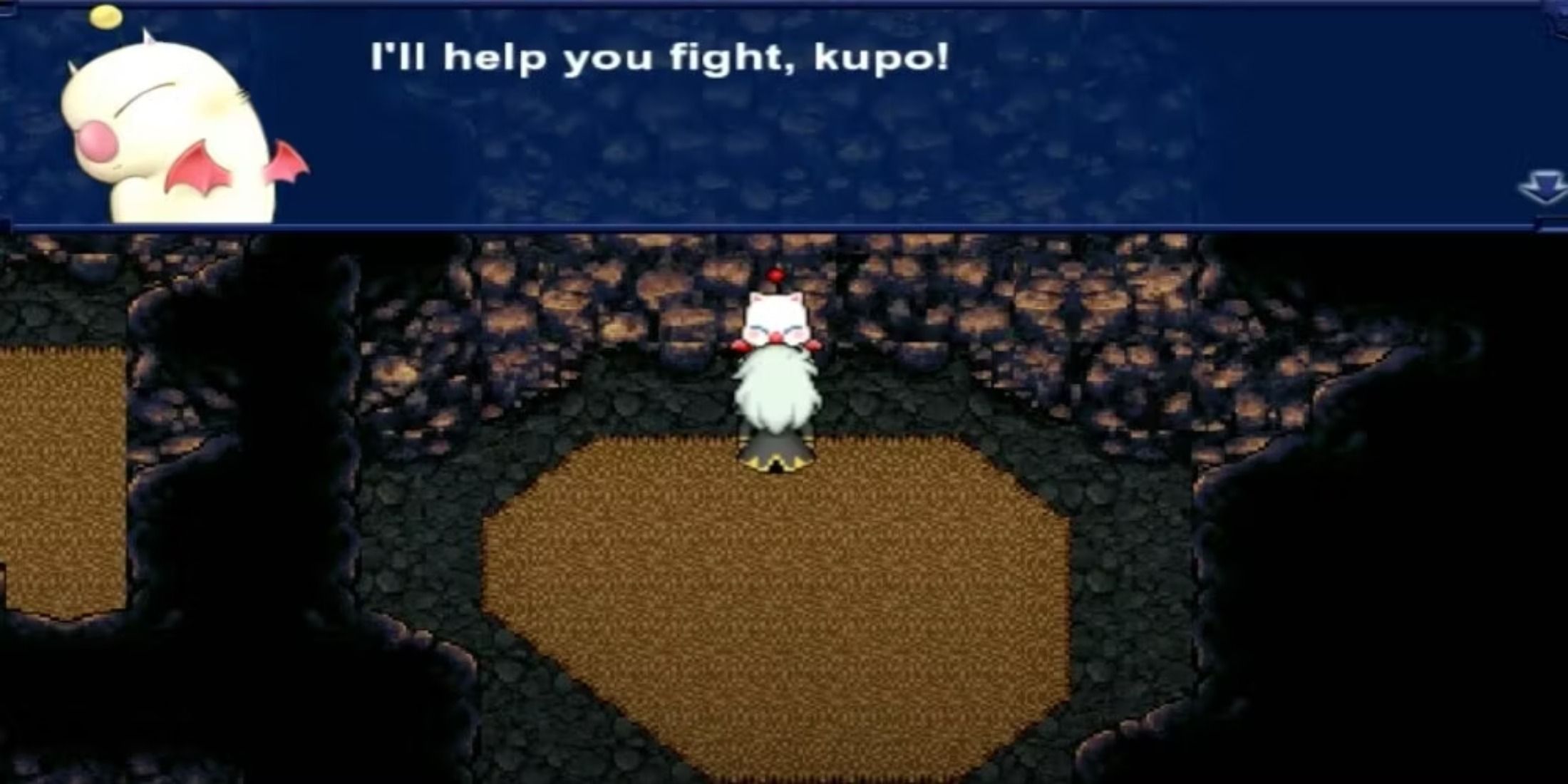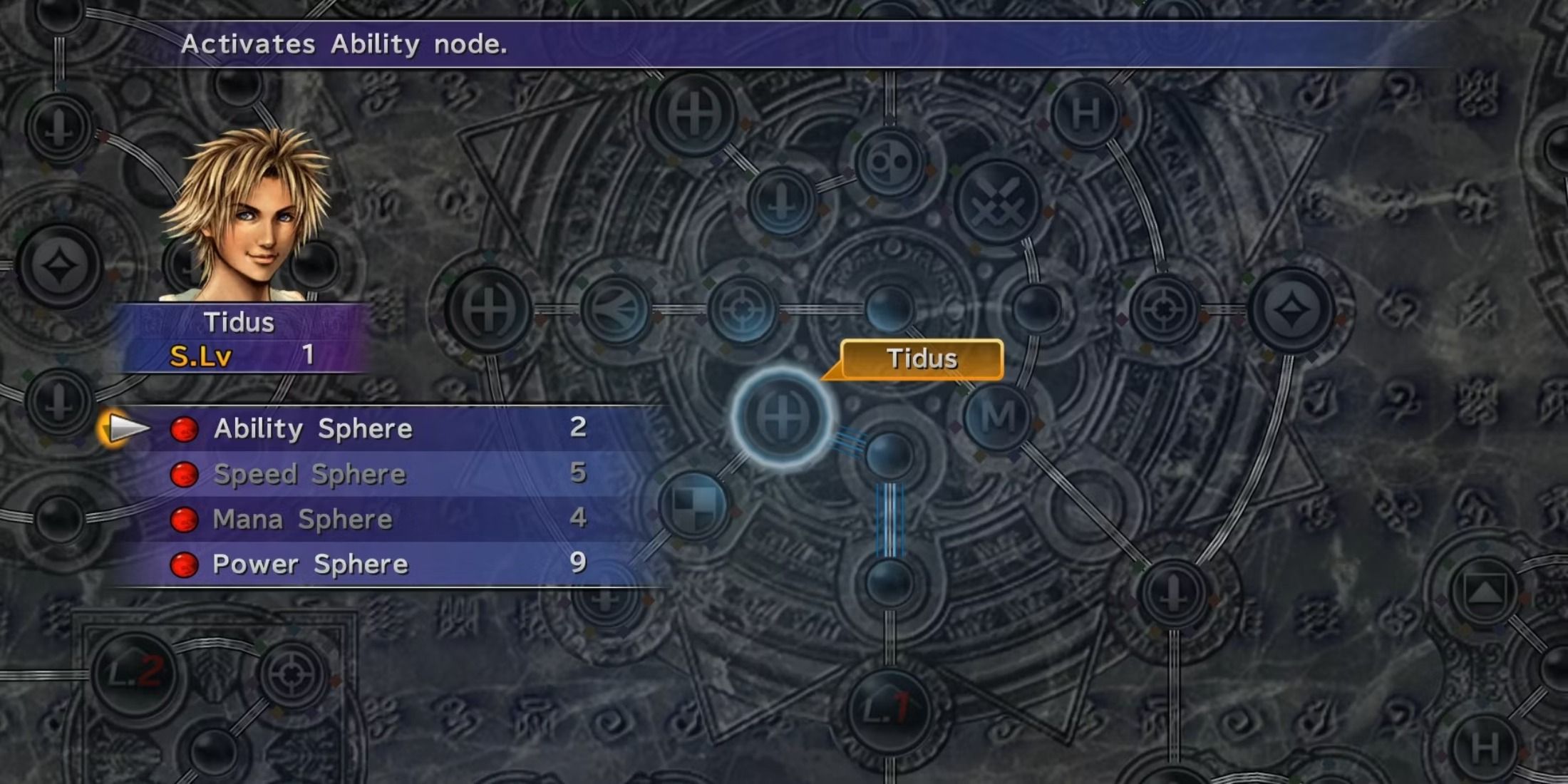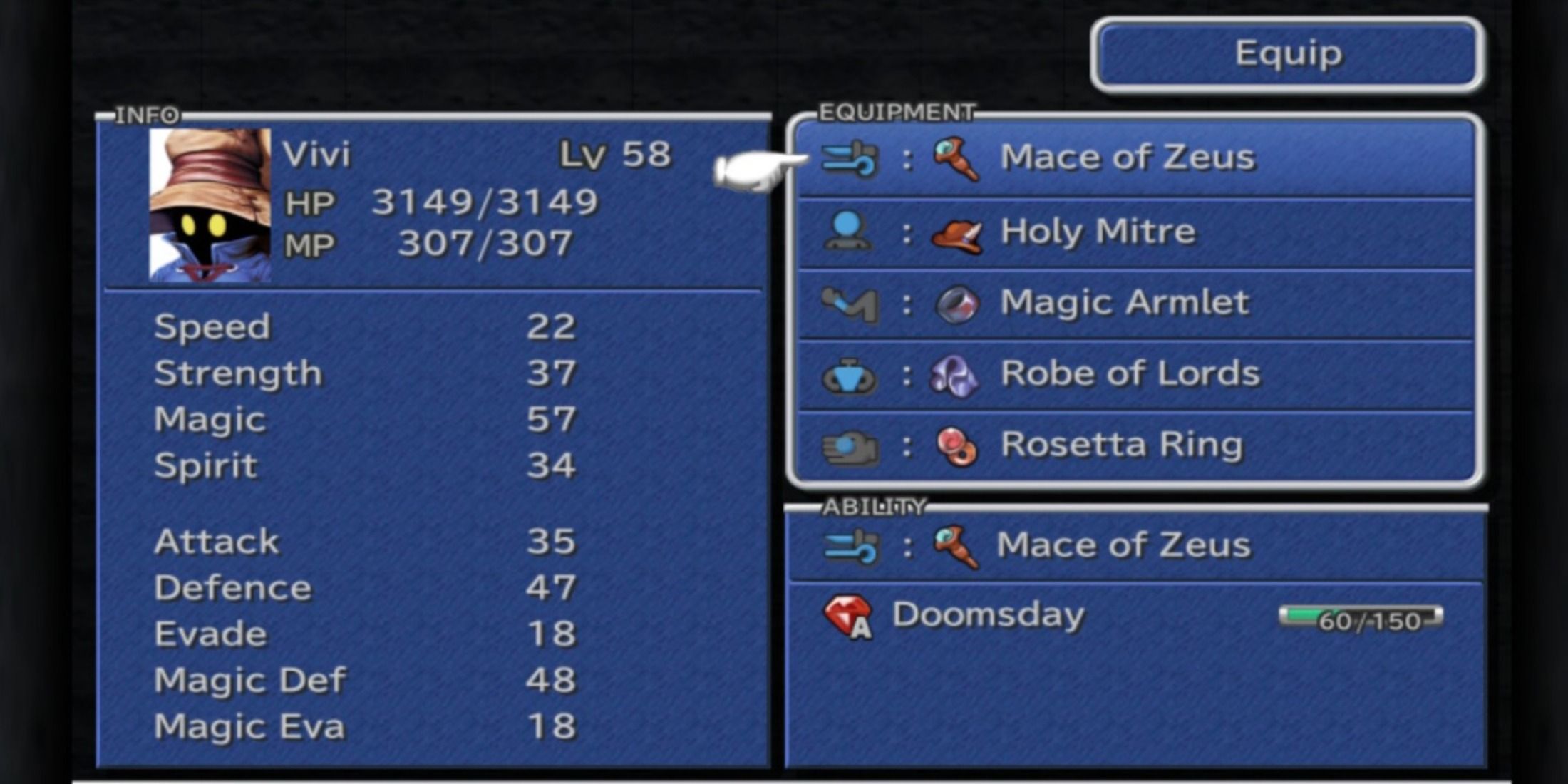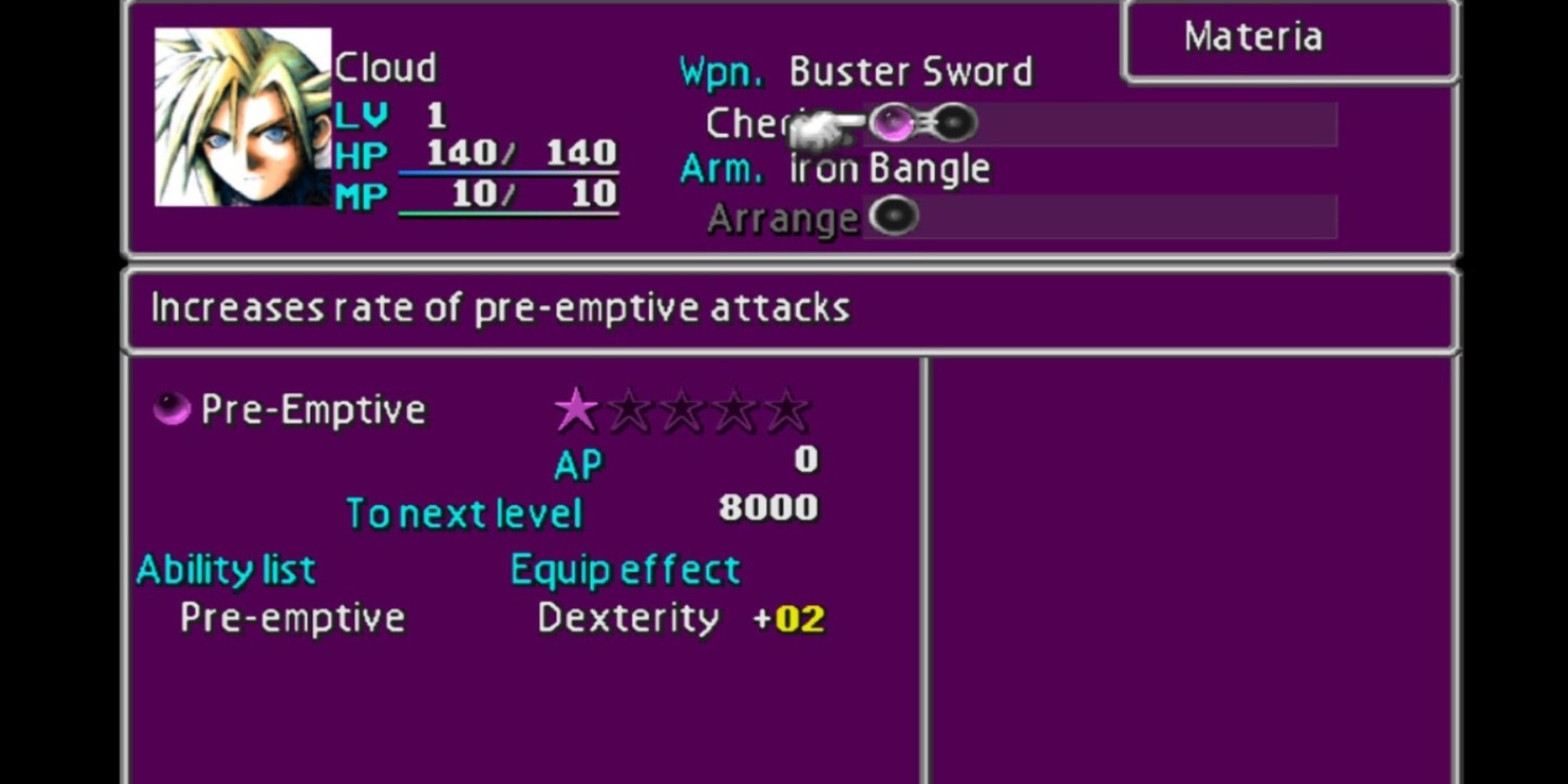Highlights
- Final Fantasy games each offer unique magic systems, like the Junction system in FF8 and the Sphere Grid in FF10.
- FF2 breaks from tradition by allowing characters to learn any spell, offering customization and complexity.
- FF7's iconic Materia system allows for countless party build possibilities, making it a fan favorite.
The mainline Final Fantasy series boasts sixteen numbered entries to date. RPG fans all have their favorites among them and their thoughts about how each measures up, but one thing that makes the games so special is just how unique they all are from each other. They’re all largely grounded in combat using magical attacks and abilities as well as physical weapons, but each takes a very different approach to its magic system in particular.
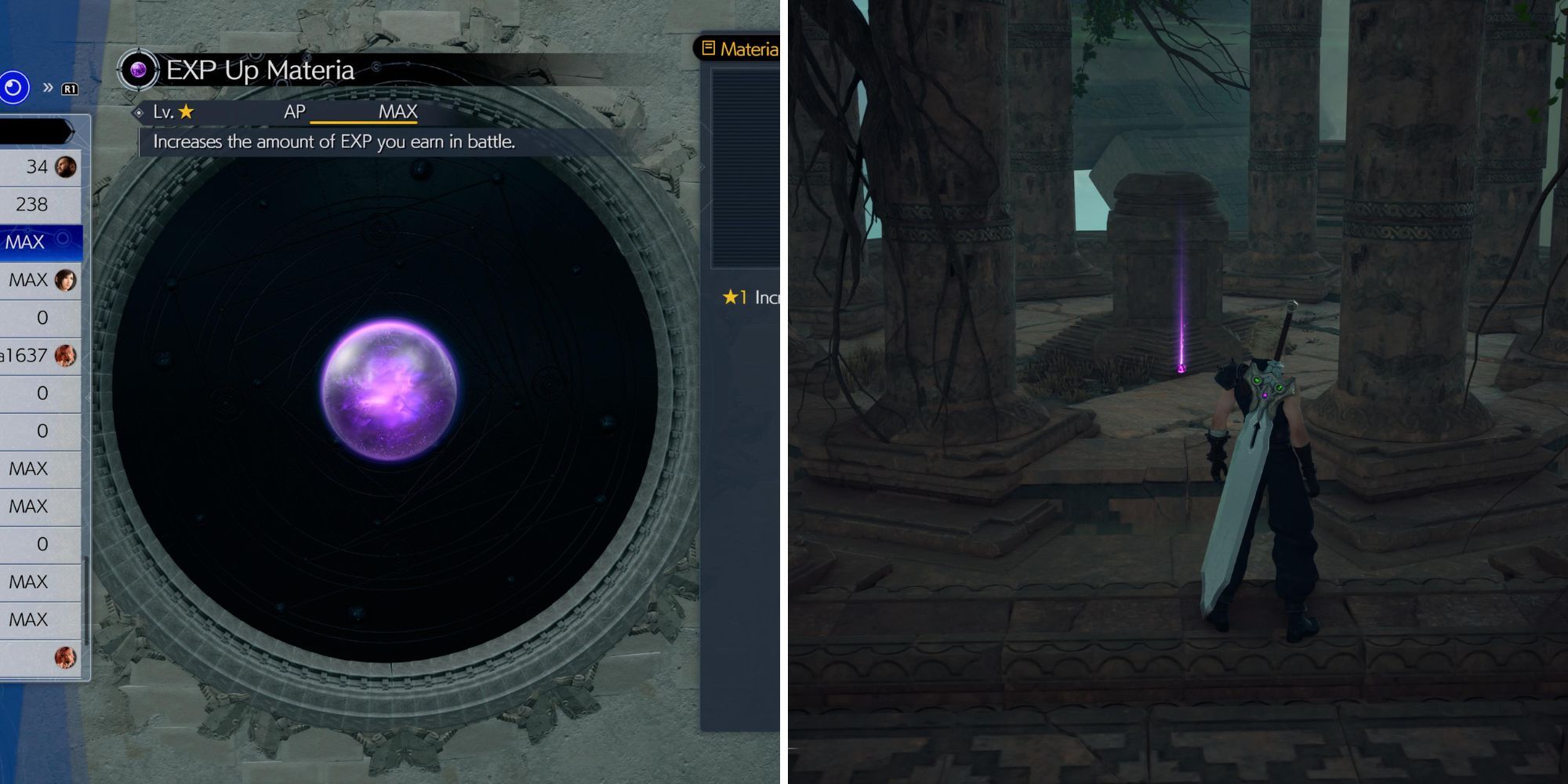
Final Fantasy 7 Rebirth: Where To Get The EXP Up Materia
Leveling up is the easiest way to get stronger in Final Fantasy 7 Rebirth, and the EXP Up Materia makes it even easier; here's where to get it.
Managing a character’s available magic and tweaking and upgrading their abilities as appropriate is a cornerstone of Final Fantasy gameplay. It can even be something of a minigame in itself. Which of the titles do it the best? Here are ten of the best magic systems in the series.
10 Final Fantasy 8: The Junction System
An Infamous System That Actually Offers Players Great Freedom
- The Junction system is frequently derided as being unbalanced and complex, but is rather deeper than a lot of magic systems in the series.
- Patient players can tailor their characters’ attributes exactly as they wish, but it can take a lot of drawing (or Triple Triad) to do so.
Yes, 1998’s Final Fantasy 8 is often derided for the Junctioning system, and the time-consuming drawing of magic spells associated with it. In-game, the guidance explaining how it all works is rather limited. Those with the experience to assign their Guardian Forces the right stat-junctioning abilities – HP-J, Strength-J and so on – and then follow that up with effective magic for specific stats, however, will find that their characters can become monstrously powerful very early. Add in the wide range of Command Abilities GFs can teach you and the defensive and offensive status options you can equip, and it’s a powerful system.
The system is also criticized for this very reason, but really it’s a tool for the player to use as they see fit, as broken as they want it to be. Players who just want to blast through the game without spending a lot of time tweaking menus and fiddling with magic, however, truly dislike it.
9 Final Fantasy 3: A Classic Magic System Featuring The Series’ First Summon Monsters
A Simple, If Expensive, System That Divides Magic Into Three Different Types
- This title introduced summon magic, offering players white, black, and summon magic depending on the classes of their party members.
- Summon spells have unique effects when not used by true Summoners.
For those unfamiliar with the earliest Final Fantasy titles, it’s odd to think that iconic summons like Ifrit and Shiva weren’t introduced until the third game. The addition of summons lent a unique new aspect to combat: Party members who weren’t specific powerhouses themselves, but who could unleash mighty beings to fight on their behalf.
Needless to say, not every party member had access to summons, but they weren’t strictly limited to those of the Summoner job class either. Different towns and locations had their own selections of spells (white, black, or summon) to purchase, and particular job classes can wield particular ones (the Freelancer can only use basic magic like Fire for instance).
A Summoner will always bring the associated monster to bear against foes when using that spell. However, Evokers are inexpert summoners. A summon spell isn’t simply named after that summon (ie Shiva), but mostly an elemental effect instead (Icen). Icen, when used by an Evoker, may activate Mesmerize, a Sleep status effect, or Icy Stare, a single-target attack, instead of the famed Diamond Dust. It’s unique but potentially debilitating, and having to hunt down the right spells can be frustrating.
8 Final Fantasy 5: Paying The (Literal) Price To Equip Appropriate Magic Spells
Collect New Spells From The Spell Shop Again
- Characters must be of the appropriate level to equip collected magic.
- Spells are bought rather than learned.
Here, black magic and white magic disciplines offer the standard fare you’d expect of each (Firaga and Death for the former and Curaga and Protect for the latter for example). There are two unique elements of this game’s system: the means of acquiring some of those spells, and some of the more standout options in the magic roster.
Characters don’t learn spells at certain levels, nor are they obtained from their equipment. Instead, Spell Shops around the game’s world sell them as items, and they must be equipped to an appropriate character to be usable, a la Final Fantasy 3. Mages’ jobs level up, and so only accomplished mages in their own magical discipline can use higher-level spells associated with it. Some of these spells are unique: The Time Mage spells, for instance (the game being a rare moment of celebration for time mages) include Old, a spell that causes the target to ‘age’ and their combat abilities to reduce accordingly.
It’s a system that allows a certain customization and a few fascinating spells among the regular options, but which does, again, necessitate lots of potentially frustrating shopping for a party that may already be cash-strapped.
7 Final Fantasy 2: A Chaotic Free-For-All Of Magic Learning
Give Your Characters Any Spell List You Choose
- Each party member can equip up to 16 magic spells at a time.
- Spells are acquired from Tomes, and gain levels.
Often, Final Fantasy titles are very strict with which characters and job classes can use which magic spells. For instance, Red Mages historically only have access to lower-level black and white magic, to compensate for their ability to use both. For Final Fantasy 2, though, all of this logic and restraint went out of the window. In this title, build customization and creativity is emphasized, as spells, once the corresponding Tome is acquired, can gain levels through use.
The original title was very limited in terms of differentiating its characters, with such a small number of job classes available. For the sequel, things went in completely the opposite direction. Each team member in Final Fantasy 2 can unleash any magic you choose, allowing for great variety in battle, and the mechanic of characters gaining ‘experience’ with their spells as they make use of them is very novel. It can be rather impractical to keep track of, though, and access to magic spells doesn’t mean they’re suited to a given party member.
6 Final Fantasy 13: The Curious Crystarium
A Widening Skill Tree For Boosting Characters
- Crystogen Points are spent to advance through the Crystarium and unlock new bonuses.
- Players take a more passive role in the implementation of abilities by other characters once battle is joined.
Final Fantasy 13 has also been derided for leaving certain series norms behind, with its restrictive locations. One thing the game did do, though, was try to forge its own path. The Paradigm Shift system affects the flow of its action RPG battles on the fly, and the concept of investing points into each character’s unique Crystarium is an interesting one too.
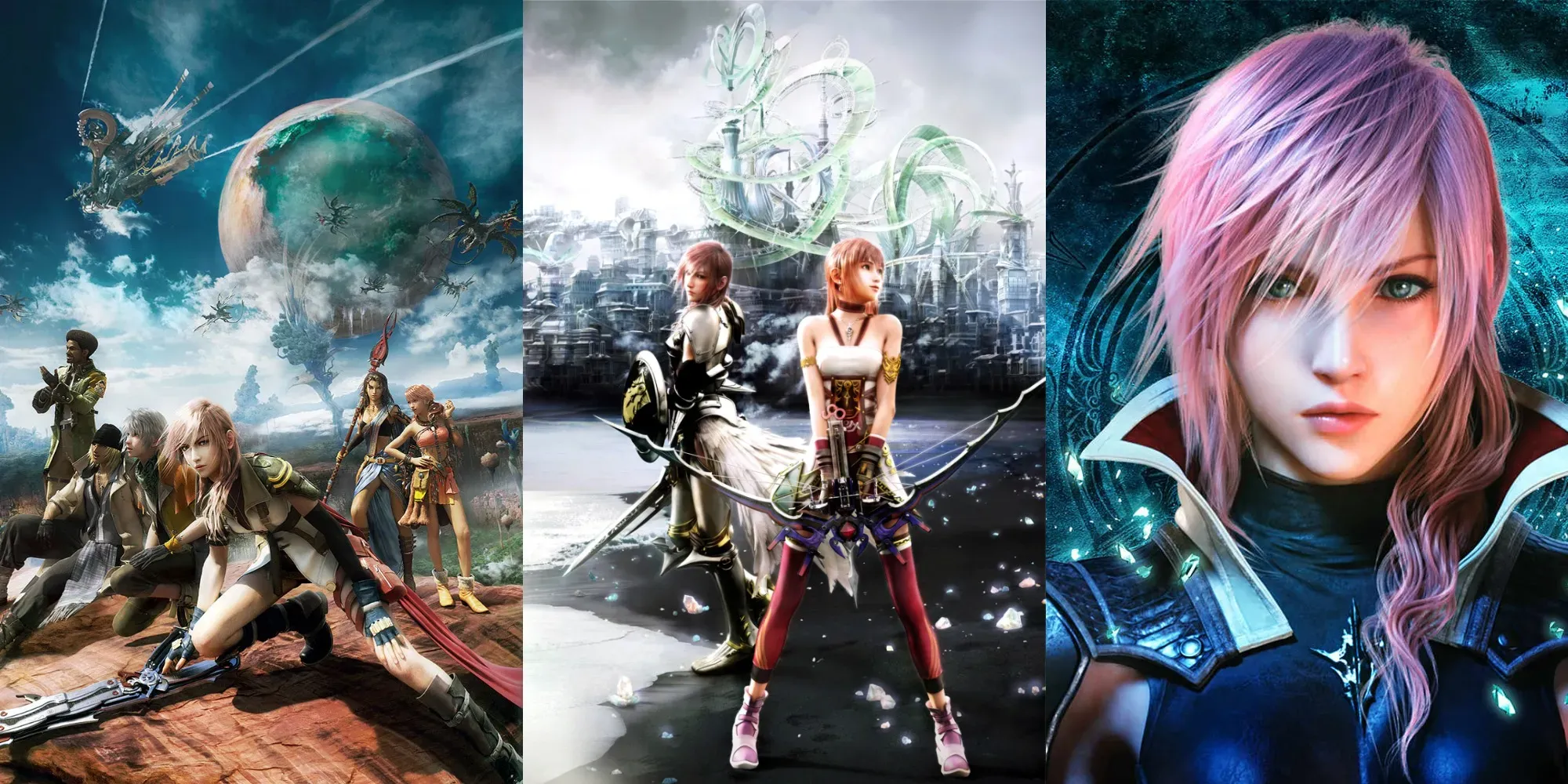
10 Things Final Fantasy 13 Does Better Than The Other Main Games
It's clear that Final Fantasy 13 does certain things better than other mainline games in the franchise.
Crystariums offer stat boosts as well as more interesting things like new abilities, allowing team members to serve their allotted role in a battle better. For an offensive mage, the Ravager role offers a focus on elemental spells, while the Healer is essentially synonymous to a white mage and Synergist boasts magical means of buffing allies’ magical power (Faithra) and physical power (Bravera). There’s considerable depth to the game’s Crystarium system and unique spells and effects to employ, a magic system and wider battle system that is perhaps let down by the fact that a lot of the action is automated.
5 Final Fantasy 16: Clive’s Eikonic Abilities
Become The Summon Monster(s)
- Eikonic powers are attacks and general abilities of Eikons, which Clive acquires steadily as the campaign goes on.
- Setting different loadouts of abilities gives players a certain level of customization, and the talents are quite well balanced.
During the course of the dark, harrowing Final Fantasy 16, Clive Rosfield learns something very important: He is that rarest of things: A Dominant, a person with the might of an Eikon within them. As the implications of sharing his very being with Ifrit become apparent, so too does the fact that being a Dominant makes things very interesting from an action RPG gameplay standpoint.
Clive’s combat abilities are initially quite limited, with formidable sword attacks, a fireball spell, a teleport-to-the-enemy maneuver and two special fiery attacks courtesy of the Phoenix. As the game goes on and more Eikons’ talents are unlocked, Ability Points can be invested in learning and powering up the talents of Garuda, Ramuh, Ifrit himself, and more, adding further traversal options, vicious claw attacks, lightning blasts, and more to the mix. The most interesting aspect of the system is that when a given ability has been mastered, it can be added to other Eikons’ lists.
Each of these moves are flashy, impactful, and visceral (as is the game’s combat in general), and they’re a joy to experiment with and unleash in combat. The trouble is that it can be very time-consuming to master specific combinations of skills, and there are limited slots to use them with.
4 Final Fantasy 6: The Espers And Magicite System
Careful Magicite Management Can Be A Time-Consuming Process
- Equip magicite, a small magical artifact, to a character to temporarily wield its magic, learning that spell when it’s gained enough “experience.”
- Magitek Armor, during its brief appearances, blends the technological and natural varieties of magic to lend a new aspect.
Across the series, characters have wielded magic in different ways. Some bear it innately, while others must ‘borrow’ magic through artificial means. In the popular Final Fantasy 6, we see a bit of both. At first glance, magicite may appear to be akin to Final Fantasy 7’s Materia: An artifact that, when collected and held, allows the holder to use the associated magic. Tragically, though, a piece of magicite is also the exhausted remains of a magical creature known as an esper.
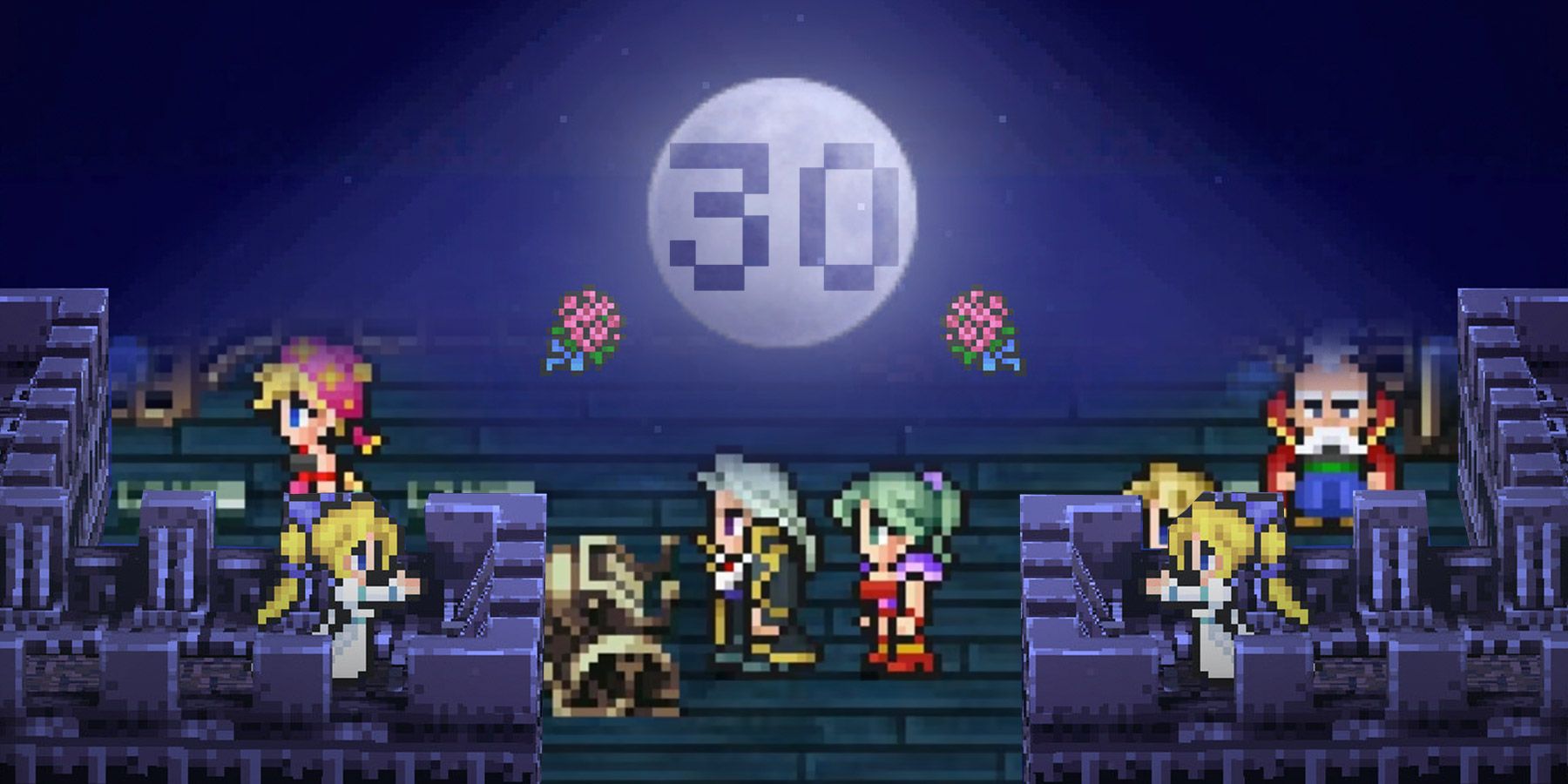
30 Years Later, Final Fantasy 6 is Still a Perfect Time Capsule for the Franchise
Looking back at Final Fantasy 6 on its 30th anniversary provides a snapshot of one of gaming's most important franchises at a pivotal turning point.
By carefully selecting the magicite equipped to each party member, you can gain the spells and stat buffs associated with it, and permanently add that spell to the character’s repertoire. The concept of espers cleverly connects the main plot of the game with its core mechanics, but as esper slots are sorely limited and it takes time to “learn” each spell through battling, it can take some time to get the best from the system’s considerable benefits.
3 Final Fantasy 10: The Sphere Grid
Empower Your Mages (Or Anybody Else) With Magic By Visiting Any Nodes You Wish
- By earning AP, advance along the Sphere Grid following specific nodes to the abilities you’ve prioritized.
- Each character begins in their own area on the grid, but it’s possible to cross over and learn abilities ‘intended’ for other party members. This lends some versatility but also complexity.
Through the Sphere Grid, Final Fantasy 10’s main cast is indirectly arranged into a kind of job system. Tidus and friends’ starting positions on the grid, very broadly speaking, place them within range of the abilities and boosts that suit their intended role. For instance, Lulu will typically want to make a beeline for black magic spells and associated bonuses, and will be well positioned at the start to develop a path towards doing so.
There are nodes that you won’t initially be able to pass through, but by continuing to develop your characters, you can open up more and more of the Sphere Grid and further influence what each team member can do in battle. It’s an effective and rewarding system, and on top of that, Final Fantasy 10 adds the interesting mechanical wrinkle of multi-cast magic with the likes of Doublecast, which the games haven’t typically offered. It can be a bit complicated for newcomers, however.
2 Final Fantasy 9: The Job System Meets An Engrossing Equipment-Based System
Combining Aspects Of Classic Final Fantasy Titles Into One Of The Best Systems Yet
- A strict job role system, augmented by the addition of Support Abilities.
- AP must be accumulated to learn the Action Abilities and/or Support Abilities associated with a given piece of equipment.
What do RPG players do when they purchase or otherwise find a better piece of equipment? Often, they’ll immediately sell the old piece and never spare it another thought. In Final Fantasy 9, though, it can pay off to keep older and sub-optimal gear equipped to the game's unique cast. Not only can this grant them stat bonuses on level up (different pieces contribute specific amounts to certain stats), but each piece of gear will have specific abilities associated with it. Those abilities, if compatible with the character, can be used as desired while the item is equipped, but will be lost if that gear is removed. Unless, that is, the party member has put into AP into it while wearing it. On hitting the threshold, that ability becomes the party member’s permanently, regardless of the equipment they have on.
Black magic, for instance, is the exclusive domain of Vivi, while nobody but Zidane (and his Tantalus friends during their brief stints in the party) can steal items, so abilities that increase chances of doing so are otherwise irrelevant. Even so, it’s fun to experiment with different combinations of Support Abilities by spending magic stones to equip them.
1 Final Fantasy 7: The Iconic Materia System
These Differently-Colored Magical Orbs Allow You To Build Your Party In Countless Ways
- Weapons, Armor, and Accessories each have different slots for Materia, and there are no limitations on which can be placed where.
- From summons to Ultima and unique commands like Chocobo Lure, you can combine any Materia you’ve found that you have the slots for.
One of the most fondly-remembered magic systems in the series, slotting Materia into linked and unlinked slots alike and switching out armor for that precious extra slot became something of a specialist skill for the RPG fans of the late 1990s. It was the Resident Evil 4 attache case wrangling of its time.
Like a lot of the best systems of its type, it’s easy to grasp the basics of, but there’s much more to it than plugging All in next to your Restore Materia (though Regen All can be very nice indeed). You can enjoy huge offensive and defensive boons by linking several pairs together in a slot-heavy weapon or piece of armor, such as counter-attacking with Comet 2 (through Magic Counter), and there are some monstrously powerful individual pieces of Materia too. or other absurdly damaging things. The way it all works and the additional bonuses/cuts to certain stats that result give the player so much to play around with.
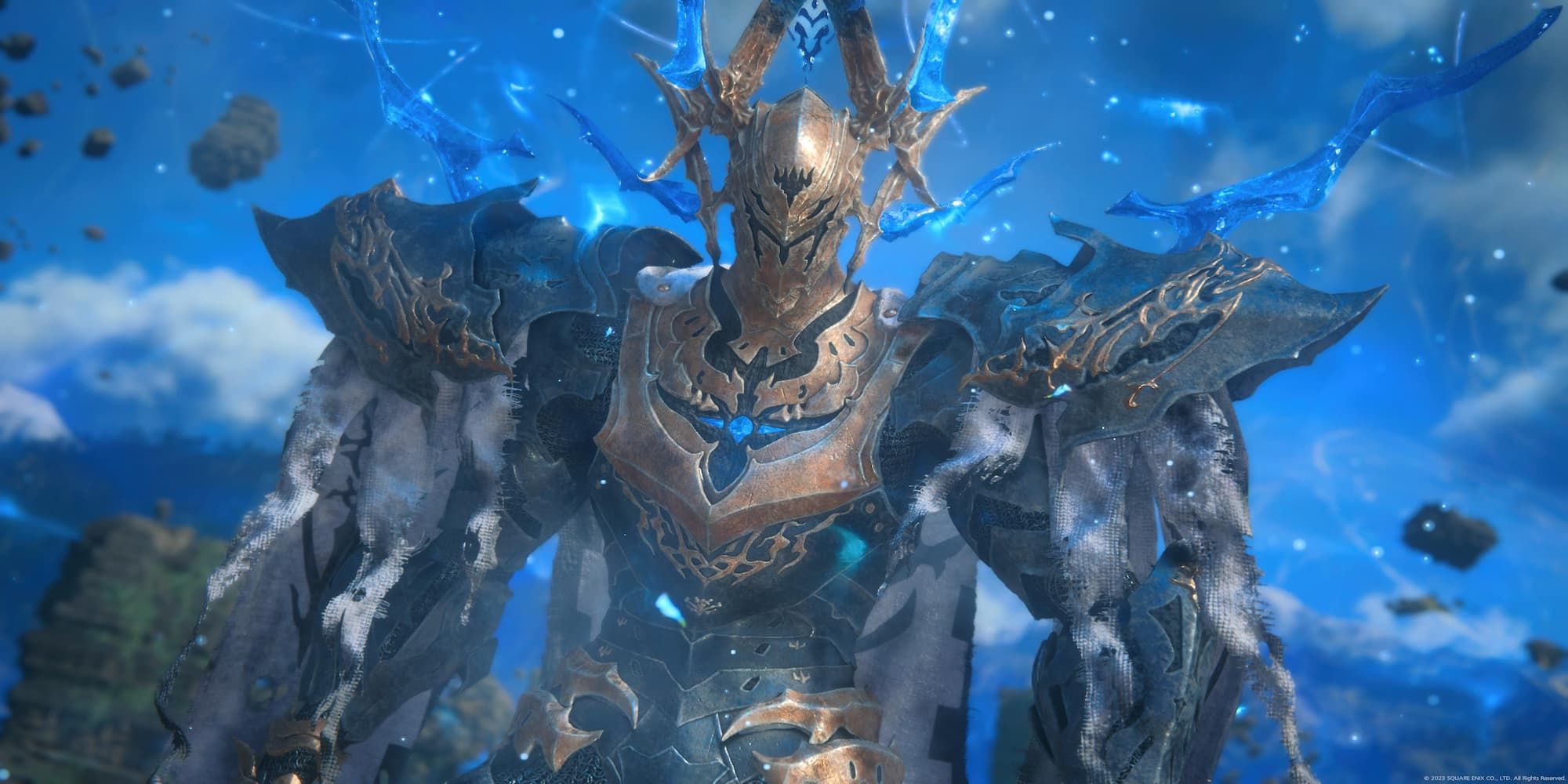
Final Fantasy 16: The Rising Tide - How To Defeat The Timekeeper
The Timekeeper is a powerful boss at the end of the Aire Of Hours in Final Fantasy 16: The Rising Tide; here's how to defeat it.

